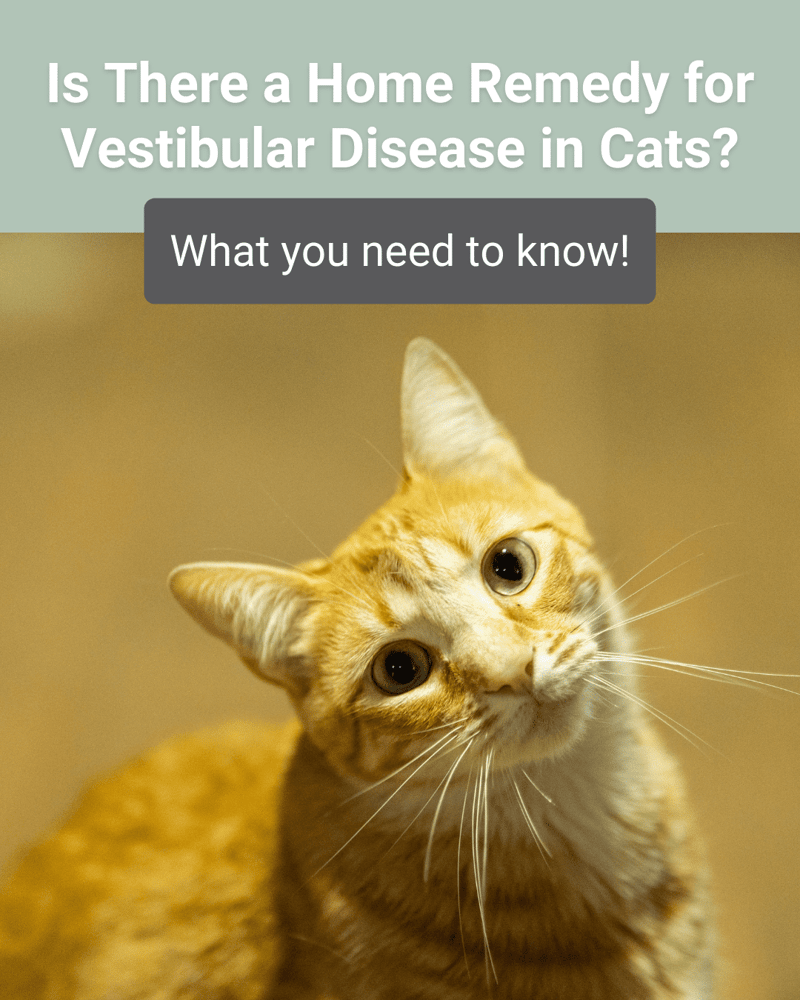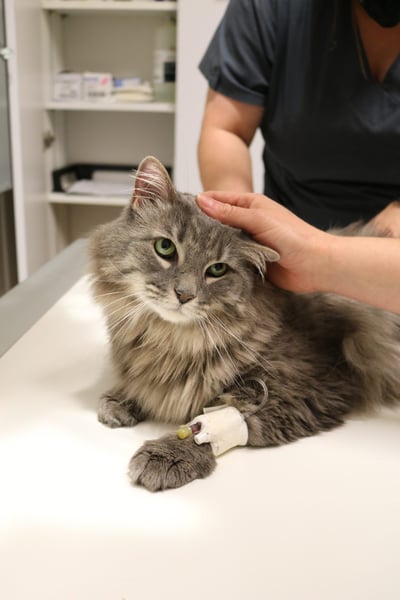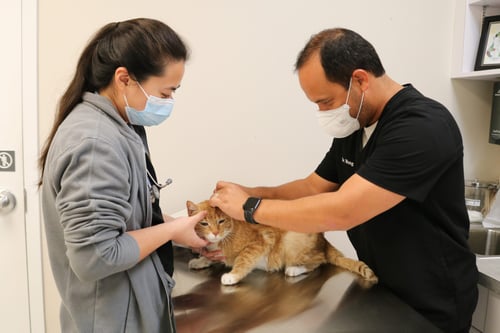Is There a Home Remedy for Vestibular Disease in Cats?
Vestibular disease can be caused by an underlying issue, which would need to be treated by a veterinary neurologist, or it can be idiopathic, which is a self-resolving condition with an unknown cause. Although there is no home remedy for vestibular disease in cats, there are things you can do at home to help your cat recover from the idiopathic form of the disease, once it has been professionally diagnosed.

What is Vestibular Disease in Cats?
Vestibular disease in cats is a balance problem that arises from issues within your cat’s vestibular system. The body’s vestibular system has two parts: the peripheral vestibular system is located within the inner ear, and the central vestibular system in the brain. When functioning properly, its purpose is to help cats and other animals with balance, coordination, and orientation.
Signs of Vestibular Disease in Cats
The signs of vestibular disease in cats can come on suddenly and be severe. Your cat may be perfectly normal one minute and crippled the next. Some cats may not be able to stand up, while others can become so disoriented that they don’t move at all. But the trademark sign of feline vestibular disease is a constant head tilt that is present in all positions.

The most common clinical signs of vestibular disease in cats include:
- Pronounced head tilt
- Nystagmus (involuntary darting of the eyes)
- Ataxia (incoordination)
- Tight circling to one side
- Falling over to one side
- Alligator rolling
- Vomiting
- Loss of appetite
What Causes Vestibular Disease in Cats?
There are many different pathologies that can cause vestibular disease in cats, infections being one of the most common. The disorders that trigger feline vestibular disease can vary dramatically in severity, so a professional diagnosis is important.
Some possible causes of vestibular disease in cats include:
- Head trauma
- Inner and middle ear infections
- Parasites
- Congenital malformations
- Infectious or inflammatory diseases
- Metabolic disease
- Vascular disease
- Nutritional deficiency
- Toxicity
- Cancer
However, if no underlying cause can be identified after a thorough investigation by a veterinary neurologist, your cat’s vestibular disease will be diagnosed as idiopathic, which is a diagnosis of exclusion.
Diagnosis and Treatment of Vestibular Disease in Cats
There is no definitive test for vestibular disease in cats. Most cases are diagnosed based on clinical signs, but finding a cause requires a thorough medical history, physical, and neurological exam of the patient.

Based on exam findings, other tests such as MRI, blood and urine tests, cerebrospinal fluid analysis, and ear cultures and cytology are often performed to rule out more serious conditions.
It is extremely important to see a veterinary neurologist because treatment of vestibular disease depends on the cause. If after thorough investigation, the vestibular dysfunction is found to be secondary to disease, the primary ailment must be treated in order for the vestibular symptoms to resolve. On the other hand, if the vestibular disease is diagnosed as idiopathic, supportive care and treatments aimed at reducing nausea are used until the condition resolves itself within a few weeks.
Home Remedy for Vestibular Disease in Cats
If, and only if, your cat’s problem is professionally diagnosed as idiopathic vestibular disease, the home remedy is supportive therapy until the vestibular symptoms resolve themselves.
During this time, you can help your cat recover from vestibular disease at home by:
- Managing your own stress, as pets can be sensitive to human emotions
- Keeping your cat confined in a quiet, safe space
- Providing support by surrounding your cat with a thick rolled up blanket
- Making sure food, water, and litter box are at ground level and close by
- Ensuring your cat is hydrated
- Assisting with feeding and fluid administration if necessary
- Helping your cat change positions periodically to prevent sores if necessary
- Avoiding carrying your cat, as it needs to walk to retrain its navigation system
Signs of idiopathic vestibular disease in cats are usually their worst during the first 24-48 hours, and then steadily improve over 2-3 weeks. Most cats make a complete recovery, although some severely affected animals may be left with a head tilt. The good news is that in most cases of idiopathic vestibular disease, the condition will never reappear.
See a Veterinary Neurologist for Vestibular Disease in Cats
Although we do not always understand why feline vestibular disease occurs, it’s usually temporary and ultimately harmless. In some cases, however, the condition may be due to a much more serious disease, so immediate veterinary consultation is always recommended if you notice any signs of vestibular disease in your cat. Experts at Southeast Veterinary Neurology are available 24 hours a day to help you and your cat through a neurological emergency.
For more information on vestibular disease in cats or any other neurological condition, schedule a consultation with any of our veterinary neurologists in Miami, FL, Boynton Beach, FL, Jupiter, FL or Virginia Beach, VA.